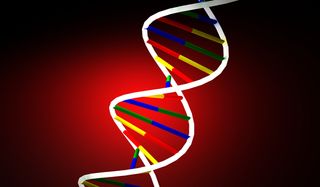Boston Strangler Case: How Long Does DNA Last?

The news that 50-year-old DNA provided a break in the Boston Strangler murder case may have you wondering: just how long does DNA last?
Yesterday, investigators on the Boston Strangler murders, which occurred in the 1960s, said that DNA taken from a blanket at one crime scene was a very close match to that of a family member of Albert DeSalvo, the suspected killer.
The findings thus link DeSalvo to the crime scene. Officials now have permission to exhume the remains of DeSalvo, who died in 1973, to test DNA from his body and confirm the match, according to the New York Times.
DNA degrades over time, and just how long it lasts depends on how well it's preserved. Factors such as exposure to heat, water and sunlight can cause the molecule to degrade faster, according to Slate. The best way to preserve DNA is by freezing it, and sealing it in vacuum-packed container, Slate says.
Last year, researchers estimated that the half-life of DNA — the point at which half the bonds in a DNA molecule backbone would be broken — is 521 years. That means that, under ideal conditions, DNA would last about 6.8 million years, after which all the bonds would be broken. But DNA would not be readable after about 1.5 million years, the researchers said.
The oldest DNA recorded was found in Greenland ice, and estimated to be between 450,000 and 800,000 years old.
Follow Rachael Rettner @RachaelRettner. FollowLiveScience @livescience, Facebook & Google+. Original article on LiveScience.com.
Sign up for the Live Science daily newsletter now
Get the world’s most fascinating discoveries delivered straight to your inbox.

Rachael is a Live Science contributor, and was a former channel editor and senior writer for Live Science between 2010 and 2022. She has a master's degree in journalism from New York University's Science, Health and Environmental Reporting Program. She also holds a B.S. in molecular biology and an M.S. in biology from the University of California, San Diego. Her work has appeared in Scienceline, The Washington Post and Scientific American.
